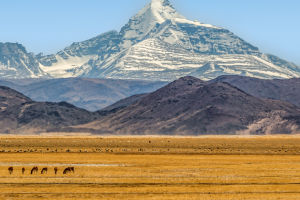Cityscape, which refers to the appearance and atmosphere formed by streets, squares, buildings, landscaping, and other elements in the city, embodies the natural and man-made beauty in the urban environment.
It can transform a city into a work of natural landscape art and bring comfort and pleasure to people's urban lives.
Landscape, as an object of visual beauty perception, is based on the separation of people and things, where people act as the appreciators. However, people also incorporate their social and environmental ideals into the landscape.
Urban landscape elements comprise natural and artificial landscape elements. Natural landscape elements mainly refer to natural sceneries such as hills, trees, rocks, rivers, lakes, and oceans.
On the other hand, artificial landscape elements include cultural relics and monuments, landscaping, artworks, trade fairs, buildings and structures, squares, and other man-made features. These landscape elements provide a wealth of materials for creating a high-quality urban spatial environment.
However, to form a unique urban landscape, it is necessary to systematically organize these elements and combine them with location to create a complete and harmonious landscape system and spatial form.
Urban landscape design plays a crucial role in improving people's living environment, enhancing their quality of life, and satisfying their dual needs for material and spiritual fulfillment. It is also significant in highlighting a city's unique characteristics and strengthening its image.
In landscape planning, incorporating landscape design can enhance the ornamental nature of the urban landscape environment, and building garden cities has become a goal for many urban landscape designs in terms of development. Specifically, what is the important role of urban landscape design?
1. Helps to shape the city's image
Urban landscape design enhances people's living environment, boosts citizens' cohesion and pride, and significantly promotes the construction of spiritual and material civilization. Moreover, for foreign visitors, it can improve their impression of the city and leave a lasting impression. In today's world, the landscape is at the core of a city's landscape.
With the improvement of people's living standards, the expectations of their living environment are increasing, and the demand for landscape design will continue to grow.
2. Helps to highlight the city's unique characteristics
Urban landscape design reflects a city's development, records its significant historical events and stories, and helps showcase the city's local cultural characteristics. No matter how a city develops and grows economically, landscape design makes people pass by special places, evoke corresponding associations, and recall the city's past.
Therefore, urban gardens can record the city's history, promote its culture, and bring out the city's unique characteristics, fully reflecting its personality.
3. Promotes the physical and mental health of residents
Urban landscape design can reduce cement, absorb dust, prevent sand, reduce noise, sterilize and sanitize, absorb toxic substances, regulate the climate, and protect the ecological balance. Additionally, it can significantly promote the physical and mental health of residents.


